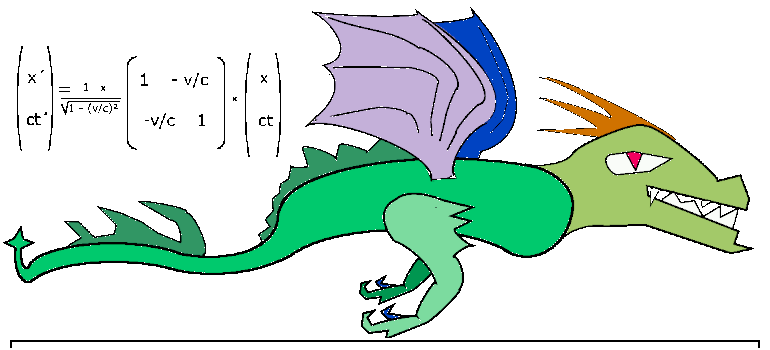Proper Time

The dragon flew past me with its head at time t0=0.
Now, after time t, I see the tip of the tail. Where is the head in its world?
Its head is near me at a distance of v·t=s. M (=Lorentz matrix)·(vt,ct) yields s'=(1·v·t -ct·v/c)/SQRT(1-v²/c²), i.e., zero.
In its world, the dragon didn't move. Only I "flew past" it.
The time ct'=(-v·t·v/c +1·ct)/SQRT(1-v²/c²)=ct·SQRT(1-v²/c²).
This is proper time, i.e., my time shortened, the inverse of time dilation.
Proper time explains the twin paradox.
This can also be used to demonstrate the length contraction of the STR.
One twin travels to destination K at distance A and then returns to the starting point at the same speed v.
Here, the time t=2·A/v is measured. Since the twin needs less time in its spaceship,
point A must be closer for it. Accelerations have been neglected here.
The traveler therefore sees the distance from A in the initial frame as shortened (superluminal speed).
Less time passes in a slower clock. Using the gravitational redshift (z), the local radius can be determined.
The relative (spatial) magnification from the inside to the outside is z+1.
This calculates the proper time factor to 1/(z+1). Only the observed orbital period is required.
If this orbital period is reduced by the factor,
Kepler's third law yields the local radius (locally there). The prerequisite is that
Newton's laws apply locally. The influence of velocity on the radius is not taken into account here.
However, for the redshift, the velocity would have to be taken into account.
The narrowing of the cone of view makes this difficult to detect..
The Doppler effect offers a better approach.
This radius is, of course, an "intrinsic radius" with the local scale. The smaller local radius at perihelion
due to proper time also explains the
relativistic apsidal rotation.
The speed of planets at smaller radii is higher there than calculated using the conic section.
Ludwig Resch